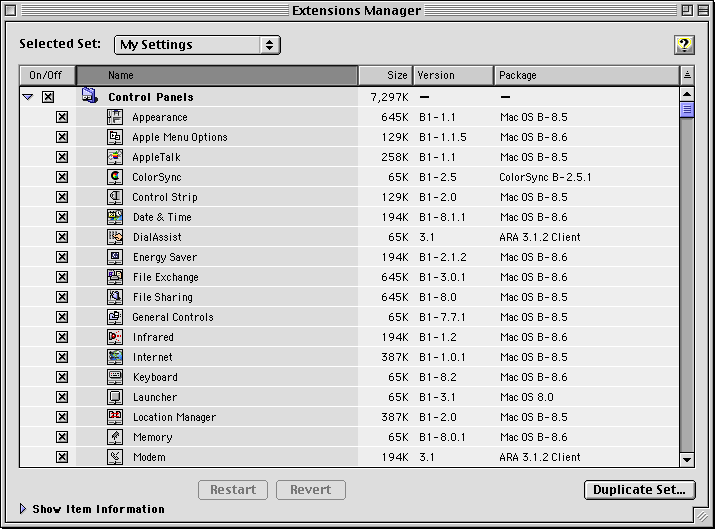


#Mac os 8.6 programming full#
This process involved making all of the routines in OS code use the full 32-bits of a pointer as an address - prior systems used the upper bits as flags. System 7 started to pave the way to move to a full 32-bit addressing system, from the previous 24-bit address space, which limited memory to a maximum of 8MB.(This was also included with System 6.0.8.) A new Sound Manager API which replaced the older ad-hoc APIs that did not abstract the hardware to any great degree.A new full-color user interface was included which gave a neat color appearance on color machines but which gracefully dropped back to the standard black and white interface on machines not supporting color.TrueType, a new outline font technology developed by Apple.A Help menu was added to the menu bar to control it. Balloon Help provided on-screen tooltips.Relatively few applications ended up adopting it. The feature was not terribly popular with programmers, who found the API unwieldy, and users didn't seem all that interested either. This feature permitted data "published" by one application to be imported ("subscribed") by another, and the data could be updated dynamically. 32-bit QuickDraw, supporting so-called "true color" imaging was included as standard-it was previously available as a system extension.

#Mac os 8.6 programming mac os#
While fairly complex for programmers to implement, this feature was powerful and popular with users, and is still available to this day as part of Mac OS X. This was an entire architecture for making scriptable applications.

A list of running applications, formerly at the bottom of the Apple menu under MultiFinder, was moved to its own menu on the right, along with Hide and Unhide functionality. The desk accessory technology was deprecated, with System 7 treating them largely the same as other applications. Desk Accessories had originally been intended to provide a form of multitasking and were no longer necessary now that multitasking was always enabled. The Apple menu (previously home only to Desk Accessories pulled from DRVR resources in the System file) now listed the contents of a folder, including aliases.This was added to help the user navigate the increasingly larger disks that were starting to appear. Aliases: small files that "pointed to" other files on the system.The line between extensions and control panels was blurred, extensions basically being GUI-less control panels. In a similar fashion, system " extensions" were also improved by placing them in their own folder (rather than the System folder's root), and holding down the Shift key during boot-up would disable them.The Control Panel became the Control Panel s - they became individual "windows of options" accessible from the Control Panels folder in the Finder, instead of being accessible using the previous Control Panel Desk Accessory in earlier system versions.Along with various user interface improvements for AppleTalk setup, System 7 also included a basic file sharing server allowing any machine to publish folders to the AppleTalk network. This allowed items to be put in the trash on different volumes, each one having its own Trash. The Trash was now a real folder instead of the special status it previously had.Because more than one application could run at a time, Desk Accessories were deprecated, System 7 treating them no different from other applications. Previously this function was available through the MultiFinder in System 6, or not available at all.


 0 kommentar(er)
0 kommentar(er)
